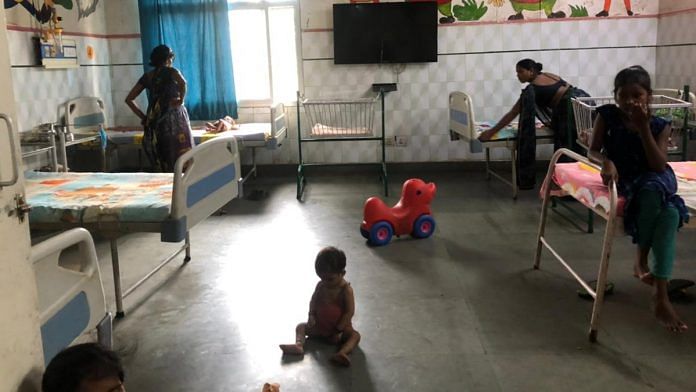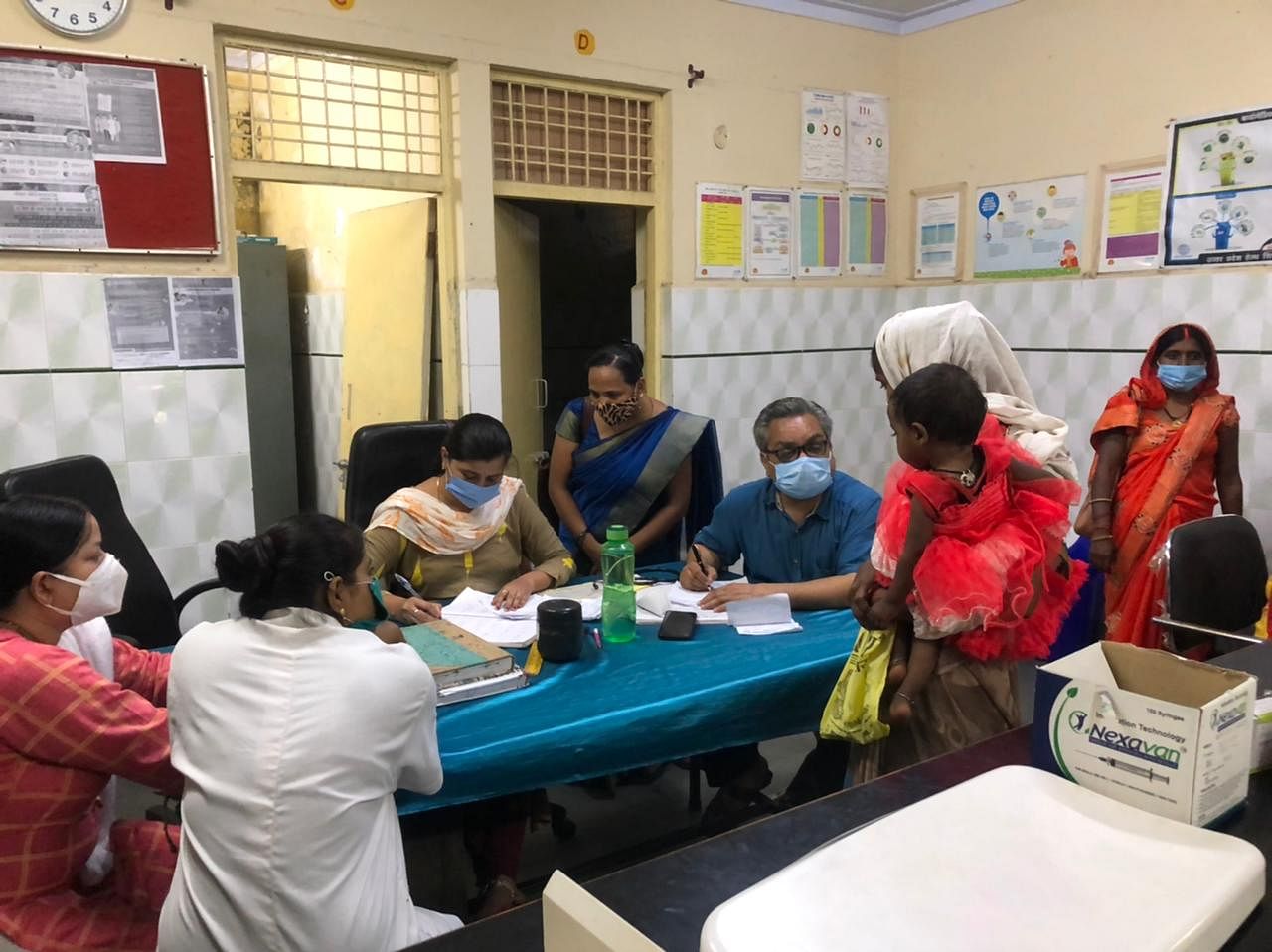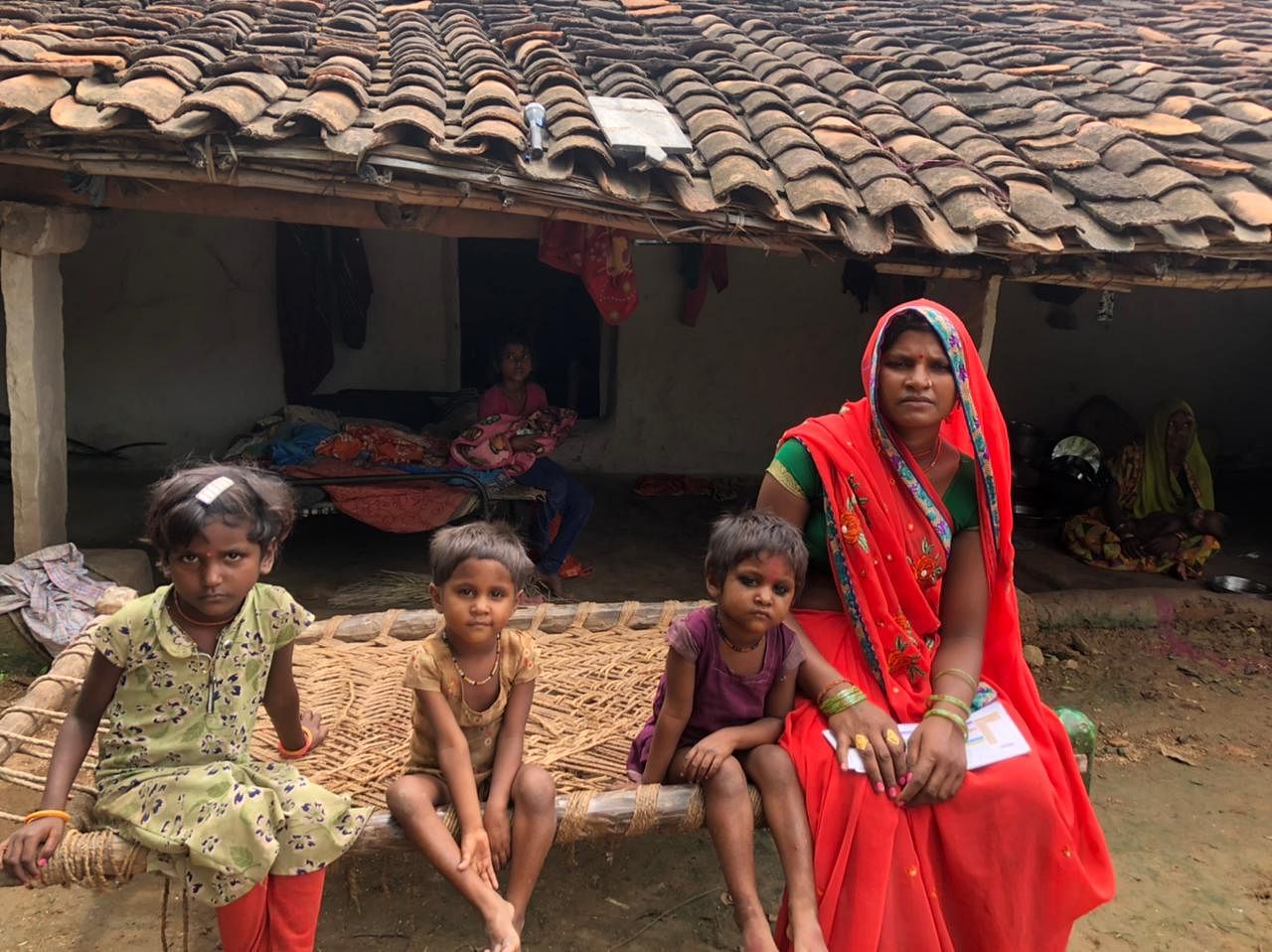
Chitrakoot: “Ri ri karti rahti hai (she keeps making the sound ‘ri ri’),” says Shobha, a 30-something mother-of-five, as she gets her youngest child — 11-month-old Radhika — examined by a paediatrician at the Chitrakoot district hospital.
That is all Shobha, who never went to school and was married off as a child, can say about her ailing daughter, who is clearly unwell.
The doctor then motions for the anganwadi worker, Anita Devi, who has accompanied Shobha from Manikpur block, and a clearer picture emerges. Radhika, who is also found to have pneumonia, suffers from severe acute malnutrition (SAM).
“Her third child is also SAM,” Anita Devi told ThePrint at the hospital, where a two-room set-up serves as a nutritional rehabilitation centre (NRC), a health facility set up by the government across states and union territories to admit and treat malnourished children and rear them to health. “But she refused to come to the NRC. So, that child was provided home-based care and a supplementary nutritional kit.”

Children with SAM are believed to face a nine times higher risk of death than a well-nourished child. But awareness about it remains low in rural pockets like the district of Chitrakoot.
This thought weighed heavy on the mind of district magistrate Shubhrant Kumar Shukla as many media reports claimed children may be at a greater risk during the impending third wave (this theory has been described as speculation by some experts).
An initiative he subsequently launched, called Sambhav, saw ASHA and anganwadi workers fan out across the district in June and July, screen under-five-year-olds for SAM at different households, and convince the families to get institutional help.
From 23 July, the administration started admitting the children at NRC, where a one- or two-week admission is mandatory and patients are not allowed to leave until they have stabilised and started eating.
Around 726 children have been identified as SAM in Chitrakoot. Another 9,028 children aged below 5 have been identified as undernutritioned, though at a lower degree than SAM.
Many women, including Shobha, have arrived at the centre over the past two weeks. While many children are under treatment at the centre, convincing parents to visit as well as hospitalise their SAM wards remains a challenge, say authorities.
Those who don’t agree to admission are offered follow-up visits and nutritional kits for treatment at home.
Also Read: 9.27 lakh ‘severely acute malnourished’ children identified until November 2020, says govt
The scourge of SAM
The World Health Organization (WHO) says malnutrition is directly or indirectly responsible for 35 per cent of deaths among children aged below five years.
SAM is defined by the UN health agency as “a very low weight-for-height/weight-for-length, or clinical signs of bilateral pitting oedema (swelling due to fluid build-up), or a very low mid-upper arm circumference”.
According to the vision document of the National Family Health Survey-4 (2015-16), 7.5 per cent of children under five in India are severely wasted, and 35.8 per cent of children are underweight.
Replying to a question in the Rajya Sabha last month, Union Women and Child Development Minister Smriti Irani cited data from the ICDS-RRS (Integrated Child Development Services-Rapid Reporting System) to state that, as of 30 November 2020, 9,27,606 SAM children aged 6 months to 6 years had been identified in the country.
Uttar Pradesh, India’s most populous state, constitutes over 40 per cent — 3,98,359 — of this figure.
It is to tackle this threat that the Union Health and Family Affairs Ministry has set up 1,151 NRCs — which are 10-bedded facilities — across the country under the National Health Mission.
Ahead of the third wave, districts across many states, including Haryana, Uttar Pradesh and Bihar, have intensified their focus on the NRCs, ThePrint has learnt from authorities in the states.
Chitrakoot, while a place of deep religious significance for Hindus, is a remote district that borders Madhya Pradesh.
It is among the over 100 backward areas identified by the government for a special development push under its aspirational districts programme.
Being a rural district — over 90 per cent of population lives in rural areas (Census 2011) — the residents of Chitrakoot are primarily daily wage labourers who walk several kilometres to reach their place of work in farms or mines, often leaving their newborns in the care of their other children. The low literacy rate — 65.05 per cent overall, 75.80 per cent for men and 52.74 for women (Census 2011) — means lack of awareness about malnutrition and government initiatives meant to address such issues, such as State Nutrition Mission (SNM-UP), ICDS, and the National Nutrition Mission (NNM).
Prevalence of such social ills as child marriage makes matters worse.
Describing the Sambhav programme, Shukla said, “We have 10 ambulances for 5 blocks for pick-up-and-drop-service. More than a dozen district administration officers are involved in the initiative. A nodal officer is appointed and each case is being monitored.”
ASHA and anganwadi workers receive an incentive of Rs 50 if they accompany the child to the centre and motivate the mother to stay for one or two weeks, until the child’s condition stabilises. They can earn an additional Rs 50 if they visit the child thrice after discharge.
Also Read: All focus on Covid ignores India’s silent epidemic — malnutrition. Our children are at risk
‘Who will watch children at home’
When a Sambhav team — comprising six members, including a child development project officer, a district programme officer, one anganwadi supervisor, an anganwadi worker, and an ambulance driver — arrived at the doorstep of Foolkali, 27, Wednesday afternoon, she was taken aback.

Just like Shobha, she, too, had been a child bride. Holding her fifth child, 9-day-old Anshu, in her arms, she led the team to her 4-year-old twin daughters who were identified as SAM by an anganwadi worker.
The idea of getting them admitted to the NRC had Foolkali in a daze.
“Hum chale jaaven toh baccha ko kaun dekhe (if I leave, who will look after the children)? My husband is a daily-wager. I have to look after the other 4 children,” she said, and began arguing with the team.
The exchange continued for 30 minutes until Foolkali’s sister-in-law, who lives nearby, offered a solution, saying she would take the girls to the centre.
This offered a little ray of hope for the team.
According to DM Shukla, bringing affected families to the centre is the biggest challenge. Since most of these families are of daily-wage labourers, they cannot afford to come on their own and miss work,” he added.
But the challenge doesn’t end there.
At the Chitrakoot NRC, Shobha was among dozens of women who had arrived with their children last Thursday afternoon. As they waited — some feeding their children, others watching the lone paediatrician examining kids, others still looking tense — Shobha got into an argument with the doctor.
The doctor told Shobha that her child needed urgent hospitalisation. But Shobha, worried about her other children, refused to get her daughter admitted.
“Ghar par kaun dekhega bachon ko? Pati se permission bhi nahin liya hai (who will watch the children at home. Haven’t even sought my husband’s permission),” she told ThePrint. “Woh kaam par gaye hain. Mujhe number bhi yaad nahin hai (he is at work. I don’t even remember his number).”
(Edited by Sunanda Ranjan)
Also Read: India needs to ensure mothers’ higher education to eradicate child malnutrition, study says

COMMENTS